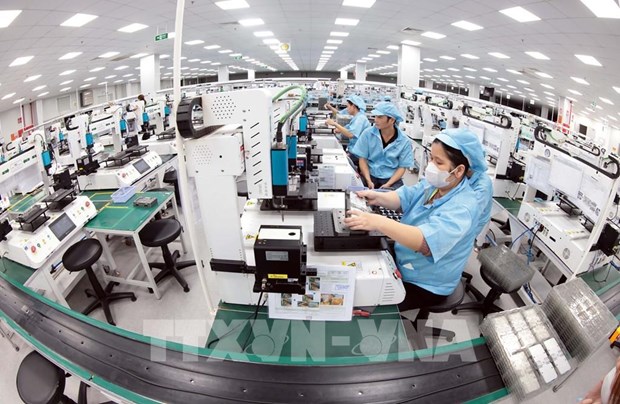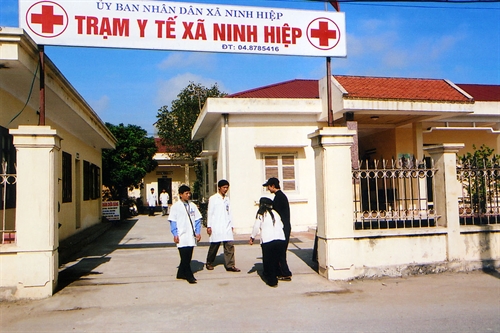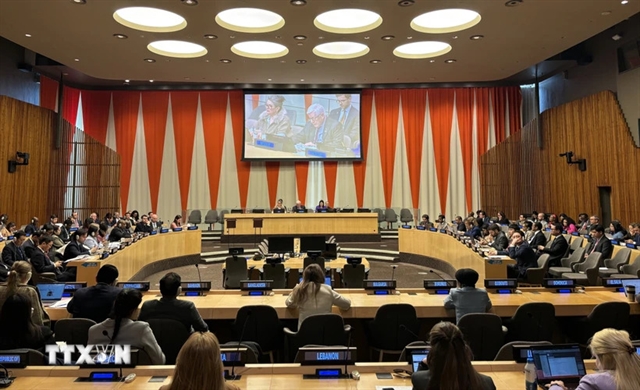

Despite recent quality upgrades of local health stations, these grassroots facilities are struggling to draw in patients who find it hard to trust them with their well-being
 |
| A view of the Ninh Hiệp Commune Medical Station in Hà Nội’s Gia Lâm District. Despite quality upgrades, local health stations struggle to attract patients, who find it hard to trust them. – VNA/VNS Photo Đình Na |
HÀ NỘI (VNS) – Despite recent quality upgrades of local health stations, these grassroots facilities are struggling to draw in patients who find it hard to trust them with their well-being.
Ngũ Hiệp Commune’s health station in Hà Nội’s suburban Thanh Trì District was acknowledged as reaching national medical standards in late 2006, and has maintained them since then. Yet the station, located only two kilometres away from the heart of the district of 200,000 people, has not received a single mother-to-be to deliver their baby over the last six years, Kinh tế & Đô thị (Economic & Urban Affairs) newspaper reported.
This seems unbelievable in a country that has always be alert to keeping the birth rate under control and preventing a population boom.
In 2015, the station only took in 1,400 patients, an average of only three or four people a day.
Ngũ Hiệp Commune health station head, Nguyễn Thị Nhâm, said that only a few residents came to the station for health examinations, though about 2,000 had registered their health insurance at the station.
The station, fully equipped with an ultrasound machine and a professional delivery room, does “mostly vaccination and disease prevention work,” Nhâm said.
A completely opposite scene, meanwhile, occurs almost every day in hospitals in central Hà Nội, just 10 kilometres to the west of Thanh Trì District.
In the diagnosis department at the national-level Bạch Mai Hospital, lines of patients waiting to register for examinations start to fill the lobby as early as 7am.
Early in the morning, Nguyễn Hữu Tuấn left his house in the suburban Hữu Bằng Commune in Thạch Thất District to queue up at the hospital from 6am to check on the sore throat he had had for days.
It later turned out Tuấn had a case of acute bronchitis that could have been easily treated at the health station in his hometown of Hữu Bằng.
Yet he spent half a day travelling and waiting because he wanted to “get examined by a good doctor”.
Đỗ Vân Anh from Nam Từ Liêm District spoke of spending nearly VNĐ20 million (US$888) to treat her daughter’s roseola infection over five days at an international hospital in Hà Nội. Yet the treatment her daughter received was no different from that she would have received at the Đại Mỗ Ward’s health station, located just 200m from her house.
The treatment at the station should also have been totally free, as the girl is under six and thus would have been covered 100 per cent by health insurance.
Tuấn and Anh are following the common thinking that good doctors only work in big hospitals, and they are far from the only ones who believe this.
Bạch Mai Hospital General Planning Division Head, Dương Đức Hùng, said that the hospital on average received 4,000 patients a day, a large proportion of which had ailments that could be treated just as well by the medical network at the sub-national level, for example at district hospitals and health stations.
“By making the choice (of going to big hospitals), the patients are tormenting themselves,” he said.
The fact that patients tend to pass by their local health systems while struggling to check in at overloaded hospitals has been on-going for years.
MoH’s Health Insurance Department Head, Tống Thị Song Thương, estimated that roughly 70 per cent of patients didn’t need to go to national-level hospitals for treatment.
The MoH was trying to tackle the issue by gradually improving the quality at lower levels, while at the same time reducing health insurance coverage for patients who refuse to visit their local health insurance registered facilities and opt for treatment at a national hospital instead.
Yet a change of public attitude towards low-level health networks still needs time as going to large hospitals has always been a habit of Vietnamese people, and habits die hard. – VNS









